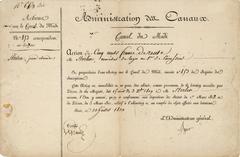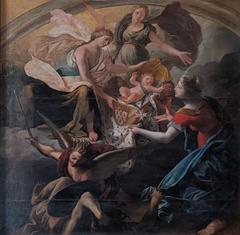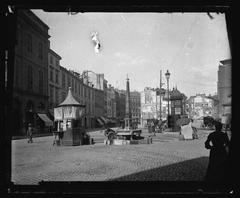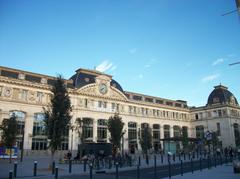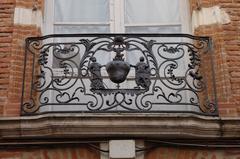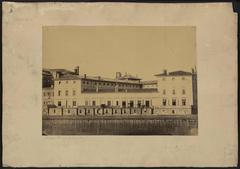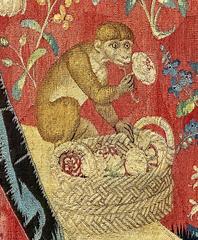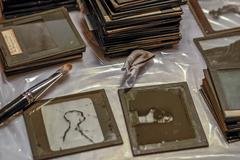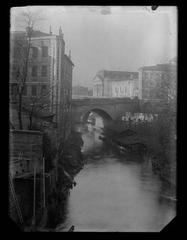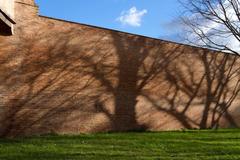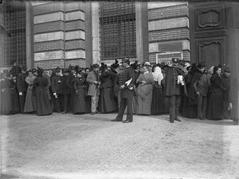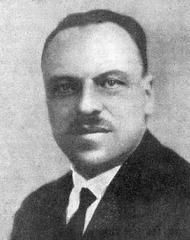Georges Labit Museum Toulouse: Visiting Hours, Tickets, and Attractions Guide
Date: 04/07/2025
Introduction: The Significance of the Georges Labit Museum in Toulouse
Located in the historic city of Toulouse, France, the Georges Labit Museum is a cultural institution renowned for its remarkable collections of Asian and Egyptian art. Founded in 1893 by explorer and collector Louis Victor Georges Labit, the museum takes visitors on a journey through more than three millennia of history, art, and spirituality. Its diverse artifacts represent regions such as Japan, China, India, Southeast Asia, Tibet, and Egypt, offering deep insights into their artistic and religious traditions.
The museum’s home—a striking neo-Moorish villa designed by Jules Calbairac—stands out in Toulouse’s architectural landscape and is complemented by serene botanical gardens with Asian and Mediterranean flora. Situated near the UNESCO-listed Canal du Midi in the Busca district, the site is as much an architectural gem as it is a repository of cultural treasures.
Although temporarily closed for renovations as of mid-2025, the Georges Labit Museum continues to serve as a cultural hub through digital initiatives, off-site exhibitions, and educational programs. This comprehensive guide provides essential information, historical context, and practical tips for planning your visit. For the latest updates and details, please consult the Musée Georges-Labit Official Site and additional resources (source).
Table of Contents
- Discover the Georges Labit Museum: History, Art, and Architecture
- Origins and Historical Development
- The Collections: Asia and Egypt
- Architectural and Environmental Significance
- Visitor Information: Hours, Tickets, and Facilities
- Engagement, Exhibitions, and Digital Initiatives
- Travel Tips and Nearby Attractions
- Frequently Asked Questions (FAQ)
- Conclusion: Plan Your Visit
- References and Further Reading
Discover the Georges Labit Museum: History, Art, and Architecture
The Georges Labit Museum is a standout destination for anyone interested in the artistic and spiritual traditions of Asia and Egypt. The museum’s collections, paired with its impressive neo-Moorish architecture and tranquil gardens, offer a multidimensional cultural experience.
Origins and Historical Development
The museum is the legacy of Louis Victor Georges Labit (1862–1899), whose passion for travel and collecting began during family business trips across Europe, North Africa, and Asia. By 1893, Labit had amassed significant artifacts and founded the museum to share these treasures with the public. Upon his death, his father secured its future by donating it to the city in 1912. Over time, the museum’s focus narrowed to Asian and Egyptian art, with collections expanding through acquisitions and donations, including contributions from the Musée Guimet.
The Collections: Asia and Egypt
Asian Art Highlights
The museum’s Asian collections are among the most distinguished in France, featuring:
- Japan: Samurai armor, lacquerware, ceramics, and religious statuary
- China: Porcelain, jade, bronze, calligraphy, and Buddhist artifacts
- Southeast Asia: Ritual objects and sculpture from Cambodia, Thailand, and Vietnam
- India, Tibet, Nepal: Hindu and Buddhist sculptures, ritual implements, and textiles
Key highlights include rare samurai armor and exceptional porcelain (source).
Egyptian Antiquities
The Egyptian section features:
- Funerary Relics: Sarcophagi, canopic jars, ushabtis
- Daily Life Artifacts: Amulets, jewelry, pottery, and tools
- Statuary and Reliefs: Representations of pharaohs, deities, and everyday people
This collection provides an immersive glimpse into ancient Egyptian civilization, ranking among the most significant outside Paris.
Collection Growth and Conservation
The museum’s holdings continue to grow through strategic acquisitions and bequests, such as the Simone Brunau donation, which enriched the Chinese art section. Conservation and research are ongoing priorities (Exposition L’encre et la matière. Chine précieuse).
Architectural and Environmental Significance
The Building and Gardens
Designed by Jules Calbairac, the museum’s neo-Moorish villa features horseshoe arches, domes, and vibrant tilework, echoing the exotic origins of its collections. The surrounding gardens, home to Asian and Mediterranean plants, provide a peaceful setting and enhance the immersive experience.
Heritage Status
Listed as a Monument Historique since December 2021, the museum’s building, gardens, and decorative elements are protected, preserving its unique architectural character for future generations.
Visitor Information: Hours, Tickets, and Facilities
Current Status (2025)
- Address: 17 Rue du Japon, 31000 Toulouse, France
- Opening Hours: Closed for renovations as of July 2025. Check the official website for reopening updates.
- Ticket Prices: Upon reopening, tickets are expected to be affordable, with discounts for students, seniors, and free entry on the first Sunday of each month.
- Guided Tours: Available for individuals and groups upon reservation; multilingual guides provided.
- Accessibility: The museum is committed to accessibility, with ramps, elevators, and multilingual resources. The gardens remain accessible during closure.
- Facilities: Restrooms, café, gift shop, and specialist library (when operational).
- Public Transport: Easily accessible via bus and metro; located near the Canal du Midi.
Engagement, Exhibitions, and Digital Initiatives
Temporary Exhibitions and Outreach
While the museum is closed, select objects are displayed at partner venues, such as the Musée des Arts Précieux Paul Dupuy. Recent exhibitions, like “L’encre et la matière. Chine précieuse,” spotlight the richness of the Chinese collection (Exposition details). The museum also organizes lectures, workshops, and cultural events in partnership with the Association des Amis du musée (Musée Georges-Labit events).
Digital Access
Virtual tours, online exhibitions, and educational resources keep the collections accessible worldwide. The museum’s digital platform will soon include high-resolution images, videos, and interactive learning materials.
Travel Tips and Nearby Attractions
- Combine your visit with a walk along the Canal du Midi or stops at the Capitole de Toulouse, Basilique Saint-Sernin, and Jardin Japonais.
- Dining: Nearby options include “Chez Moi” for Asian cuisine and “Le Si Bemol” for regional French fare.
- Photography: The museum’s architecture and lush gardens provide ideal settings for memorable photos.
- Transport: Use public transportation to avoid parking challenges, and consult the website before your visit for the latest updates.
Frequently Asked Questions (FAQ)
Q: When will the museum reopen?
A: The museum is scheduled to reopen in late 2025. Follow the official site for updates.
Q: Are the gardens open during renovations?
A: Yes, the gardens are accessible to the public even while indoor galleries are closed.
Q: Is the museum accessible for people with disabilities?
A: Yes, the museum and gardens are designed for accessibility, with additional virtual content in development.
Q: Are guided tours available?
A: Guided tours will resume when the museum reopens; online and off-site events are ongoing.
Q: Is photography allowed?
A: Photography is permitted without flash; some restrictions may apply in temporary exhibitions.
Conclusion: Plan Your Visit
The Georges Labit Museum is a cultural jewel in Toulouse, offering a unique intersection of Asian and Egyptian art, architecture, and botany. Its collections and heritage building provide a window into centuries of human creativity and spiritual practice. While temporarily closed, the museum remains accessible through digital initiatives, traveling exhibitions, and its beautiful gardens. For comprehensive visitor information, ticketing updates, and special event news, regularly consult the Musée Georges-Labit official website.
Enhance your experience:
- Download the Audiala app for guided tours and curated content.
- Explore related articles on Toulouse’s museums and historical sites.
- Connect with the museum on social media for the latest news and digital content.
Begin your journey at the Georges Labit Museum—where East meets West, and history, art, and architecture converge.

